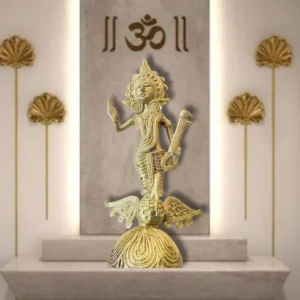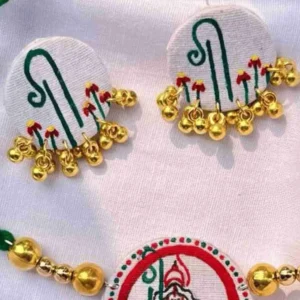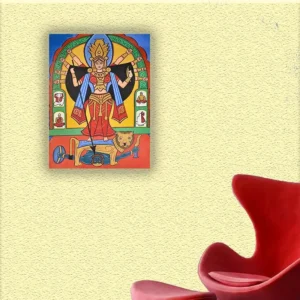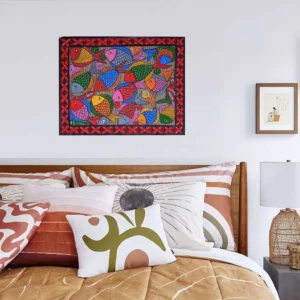Meaning Of Khadi
Khadi is a homespun/self spun / handspun or hand-woven piece of cloth that was woven on a spinning wheel or Charkha. Khadi is also famous because this piece of fabric technique got its popularity, as it was introduced by the great Mahatma Gandhi as a Khadi Movement in 1918. It was a self-reliant and relief movement for the poor families and masses of Indian villages.
History & Origin of Khadi
Khadi word is specially derived from the word “khaddar”, a term used in 3 countries: India, Pakistan & Bangladesh, which means fabric. Simple cotton, silk, or woolen self-woven fabrics are known as Khadi.
Mahatma Gandhi was the one who saw the potential of Khadi to be a self-reliant and independent tool towards a bigger goal of freedom of India.
As said by Gandhi, “Khadi mentally means decentralization of the production and distribution of the necessaries of life.”
And also he said the golden words which are true to its ultimate sense, “One hour spent in spinning should be an hour of self-development of the spinner.“
When Gandhi said, “If we have the KHADI spirit in us, then we should surround ourselves with simplicity in every walk of our life”, by “Khadi spirit” he meant infinite patience. It is known that, while producing Khadi, how much patience is required for the spinners and the weavers, that much patience the masses should have while spinning the Charkha because they are doing something extraordinary, they’re “spinning the thread of Swaraj” for the ultimate independence.
According to Gandhi, the Charkha represents the hopes of the Indian villagers or the masses. Finally from this Khadi movement, when Gandhi understood that more production of Khadi, more will be the sale of handwoven fabric, and more lives will be changed and closer they all will be towards freedom. That was the moment when Gandhi announces the Swadeshi movement which became synonymous with Khadi and Boycott movement.
Gandhi promotes Swadeshi by boycotting foreign goods, schools & colleges. Khadi became a social equalizer, and gradually it became the national fabric of India at that time. Also, during 1925, the production and selling of Khadi were at their peak, which gave lakhs of employment to the masses, which helped their livelihood with earnings.
Khadi Fabric Properties
Whenever we utter the word Khadi, an image floats in our subconscious mind, that is, Mahatma Gandhi spinning a Charkha. Since pre-independence, Khadi has been associated with the freedom struggle of India and Bangladesh, divide and rule, and politics. Khadi is a very simple fabric that is known for its rugged texture, which gives a comfortable feel to our skin. It could be khadi silk fabric, khadi cotton fabric or it could be simply termed as handloom fabric. The property is such that it provides coolness in summers and warm in winters.
Khadi, A Fashion Statement Of 21st Century
Gradually India has stepped into the 21st century, wherein every step there is something new, something creative, and something smart is needed to fit people’s lifestyle. So new advanced breed of Indian fashion designers, who started experimenting with this versatile fabric Khadi, to ensure that Khadi remains as a live notion in people’s minds as a valuable fashion asset.
These fashion designers reinterpreted the fabric in such a way that it gradually became trendy. It is being done by focusing on the eco-friendly property of the fabric, which is so comfortable and breathable on the skin. The rugged fabric has got a very gentle and peaceful touch, which not only provides warmth in winters and coolness in summers. All these properties of Khadi are now crazily accepted and appreciated by Indians and foreign countries.
Now the new age Khadi products can be done through Khadi online shopping. Dresses, sarees, jackets, even bridal lehengas, everything can be made out of Khadi. This fashion challenge has been taken up by India’s top fashion designers like Sabyasachi, Rajesh Pratap Singh, Debarun Mukherjee, and many more. Many budding fashion designers are also doing wonders with this beautiful Khadi fabric. You can get Khadi sales on different online e-commerce websites and also on the leading designer’s website pages.
In short, Khadi is that fabric, which is eco-friendly and sustainable, which has seen the pre-independent India and the fascinating freedom struggle of India, journeyed through ups and downs now to become a valuable fashion statement in the 21st century.





